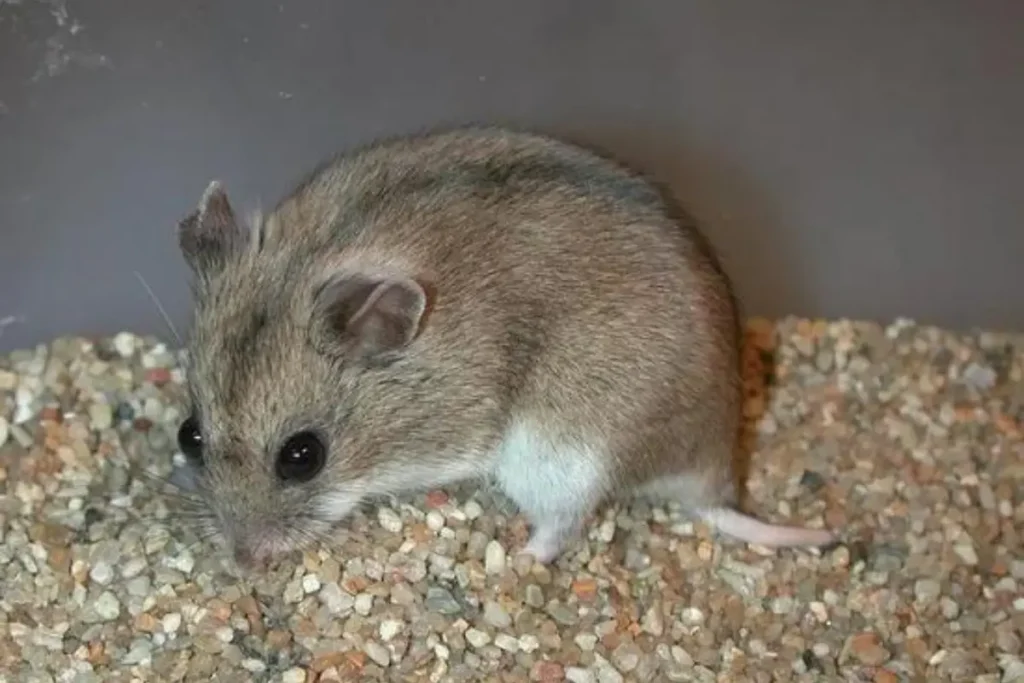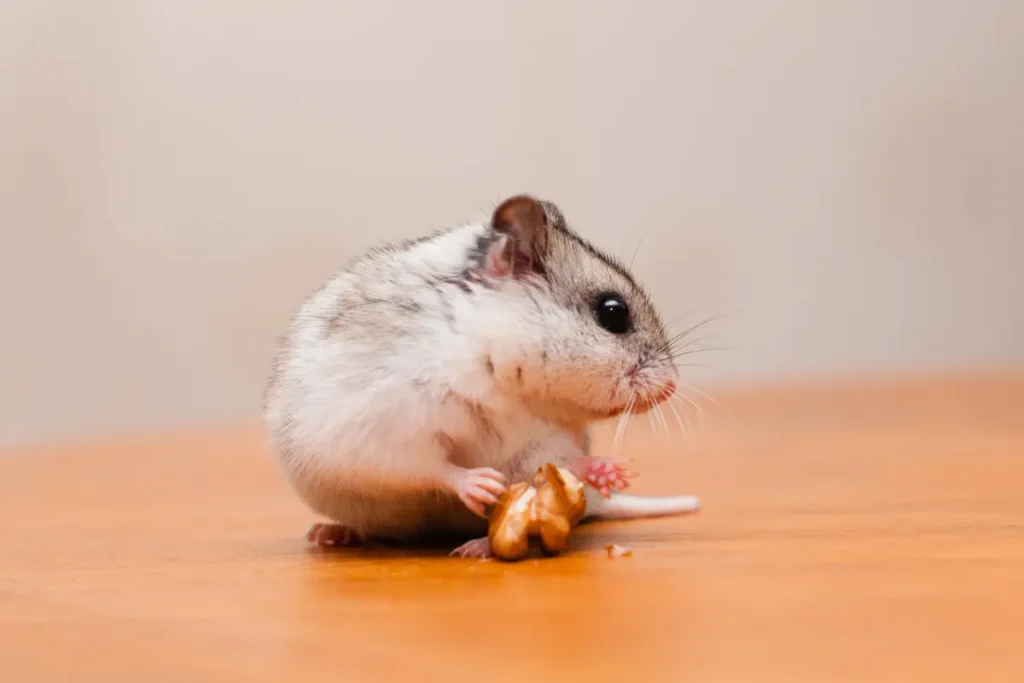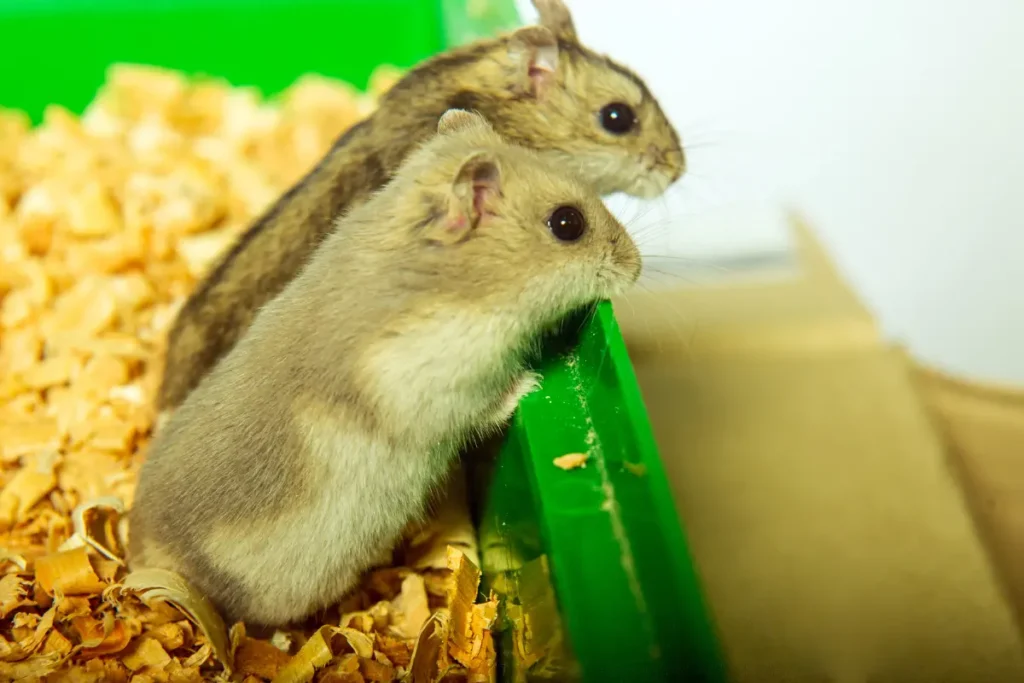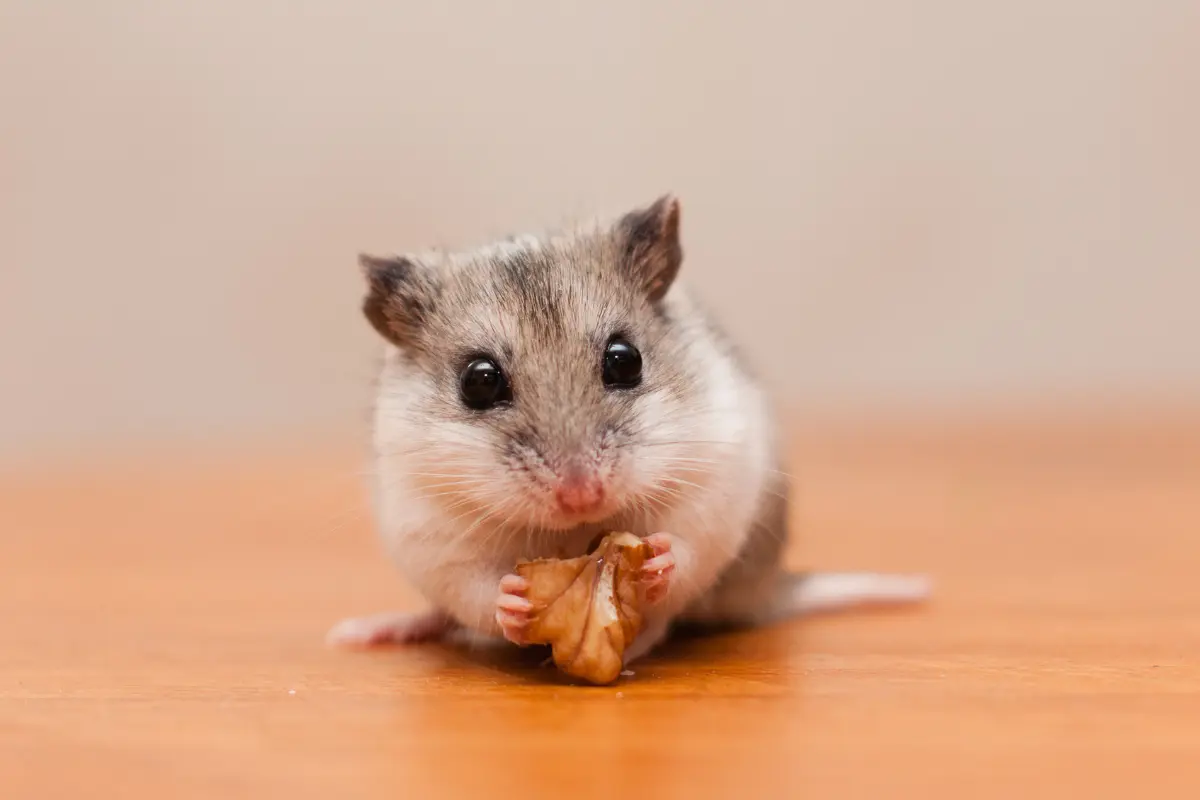The Chinese Hamster Guide: Care, Behavior, and Essential Tips
The Chinese hamster, known for its slender body and distinctive “mouse-like” tail, is a unique and endearing pet. While not as commonly found as Syrian or dwarf hamsters, the Chinese hamster has gained a following due to its charming personality, gentle disposition, and ease of handling.
1. An Introduction to Chinese Hamsters
Scientific Name: Cricetulus griseus
Origin: Chinese hamsters are native to the deserts and rocky areas of northern China and Mongolia.
Size: Chinese hamsters typically reach about 3–5 inches in length.
Lifespan: They generally live 2–3 years in captivity, with proper care.
Appearance: Unlike other hamster breeds, the Chinese hamster has a slender, elongated body with a longer tail (about 1 inch), resembling a mouse more than a typical hamster. Their fur is soft, with shades of brown and gray and a darker stripe running down the back.
Chinese hamsters are known for their calm temperament and are often less prone to biting, making them a popular choice for patient and gentle handlers.
Rare and Special Varieties
Chinese hamsters are not as commonly found as other popular pet hamster species, such as Syrian or Russian dwarf hamsters, making them relatively rare in some areas. They are available in the pet trade, particularly in the United Kingdom and other regions, but they are less widespread in comparison to more common species.
Additionally, Chinese hamsters are classified as “exotic” in some U.S. states, such as California and New Jersey, where ownership is restricted, requiring special permits to own or breed them. This contributes to their relative rarity in those locations.
White Chinese Hamsters
Some Chinese hamsters, such as the “dominant spot” or “spotted white” variety, are rare and often have unique color patterns, with patches of gray or brown on a predominantly white coat. These hamsters are primarily available through specialized breeders and are less commonly found in pet stores.
2. Personality and Behavior
Chinese hamsters are active, curious, and highly entertaining pets. Known for their agility, they enjoy climbing, running, and exploring their surroundings. These hamsters are more agile than some other species, often climbing and even balancing on objects.
- Shy and Timid: Chinese hamsters are naturally cautious and may take time to adjust to a new environment. Initially, they may hide or avoid contact but can become friendly with consistent handling.
- Solitary and Territorial: Unlike some dwarf hamsters, Chinese hamsters are highly territorial. They are best kept alone, as even same-sex pairs can lead to aggression and stress.
- Gentle and Affectionate When Tamed: When tamed, Chinese hamsters can be quite gentle and affectionate, often climbing onto a handler’s hand or exploring their arm. They are known for clinging to their handler’s fingers with all four paws, a unique behavior that makes them endearing pets.
- Active and Agile: Chinese hamsters are naturally agile and enjoy climbing, burrowing, and exploring. Their agility and climbing skills make them a bit tricky to handle at first, but they can be enjoyable to watch in a well-enriched cage.
- Nocturnal and Quiet: As nocturnal creatures, Chinese hamsters are most active at night, which is worth considering if you are looking for a pet that will be awake during the day.
Male vs. Female Chinese Hamsters
Chinese hamsters show some behavioral and physical differences based on gender:
- Size: Males tend to be slightly larger than females and may have more pronounced genitalia, making gender determination easier.
- Temperament: Males are typically more docile and easier to tame, while females are known to be slightly more independent and territorial.
- Breeding Considerations: If breeding, separate males and females promptly, as Chinese hamsters can become aggressive when confined together, especially during pregnancy.

3. Housing Requirements
The right environment is crucial to keeping a Chinese hamster healthy and happy. Providing an appropriately sized and stimulating habitat ensures they can exercise and engage in natural behaviors like burrowing and climbing.
- Cage Size: Chinese hamsters need plenty of space to explore and exercise. A minimum cage size of 24 x 12 inches is recommended, but larger is always better. A multi-level setup can be beneficial, as these hamsters enjoy climbing.
- Cage Type: Wire cages with solid plastic bottoms or large glass tanks work well. Make sure any wire spacing is narrow (less than 0.5 inches) to prevent escapes.
- Bedding: Provide 3–4 inches of bedding, such as paper-based or aspen shavings, allowing them to dig and burrow comfortably. Avoid cedar or pine bedding, as the strong scents can irritate their respiratory systems.
- Hiding Spots: Include hideouts and tunnels where they can retreat and feel safe. Cardboard boxes, wooden hideouts, and tubes make great additions.
- Climbing Structures: Unlike other hamster species, Chinese hamsters love to climb. Include climbing toys, branches, or ladders to encourage their natural agility.
- Exercise Wheel: A wheel is essential for exercise. Choose a solid wheel with a minimum diameter of 6.5 inches to prevent spinal issues. Ensure it’s smooth and doesn’t have gaps where tiny feet can get caught.
4. Diet and Nutrition
Chinese hamsters are omnivores, and their diet should mimic what they would find in the wild—seeds, grains, and small protein sources. They are also prone to diabetes, so dietary management is essential.

Diet Essentials:
- Pelleted Food or Seed Mix: Choose a commercial hamster food formulated for dwarf hamsters to ensure a balanced diet. Avoid mixes with high sugar content.
- Fresh Vegetables: Provide safe, hamster-friendly vegetables like leafy greens, carrots, and broccoli in moderation.
- Protein: Occasional treats like mealworms or small pieces of cooked egg provide protein.
- Limit Fruits: Because Chinese hamsters are prone to diabetes, fruit should be offered sparingly or avoided altogether.
Feeding Tips:
- Scatter Feeding: Scatter their food around the cage to encourage natural foraging behavior.
- Monitor Food Stashes: Check for hoarded food to ensure it hasn’t spoiled, as Chinese hamsters tend to stash food in hidden areas.
5. Health and Common Issues
Chinese hamsters are relatively hardy but are prone to certain health conditions:
- Diabetes: Chinese hamsters have a higher risk of diabetes. Limiting sugary foods is essential, as symptoms of diabetes can include excessive drinking, urination, and weight loss.
- Respiratory Infections: Drafty or damp environments can cause respiratory issues, leading to symptoms like sneezing or labored breathing.
- Dental Health: Their teeth grow continuously, so chew toys are important for dental health.
- Wet Tail: Although less common in Chinese hamsters, wet tail—a severe intestinal infection—can cause diarrhea and requires immediate veterinary care.
Preventive Care:
- Regularly clean the cage to prevent bacterial buildup.
- Monitor weight and behavior for early signs of illness.
- Provide a balanced diet and a stable, low-stress environment.
Chinese Hamster vs. American (Syrian) Hamster
“Chinese hamster” typically refers to the Chinese dwarf hamster (Cricetulus griseus).
In the context of the U.S., the most common pet hamster is the Syrian hamster (Mesocricetus auratus), often referred to as the “golden hamster” or sometimes informally called “American hamster” due to its popularity in the U.S.
Here’s a comparison between the Chinese dwarf hamster and the Syrian hamster:
1. Size and Appearance
Chinese Hamsters are small, slender, and mouse-like, typically growing to about 3-5 inches in length. They have a long tail (unusual for hamsters) and a brown or gray coat with a dark stripe running down their back.
Larger than the Chinese hamster, Syrian hamsters can grow up to 6-7 inches long. They have a rounder body, and no noticeable tail, and come in various coat colors and patterns.

2. Temperament
Chinese Hamsters tend to be more timid, making taming a slower process. Once tamed, they can be gentle but are still more independent and less cuddly than Syrians.
Syrians are generally easier to tame and more tolerant of handling, making them popular for children and beginner pet owners. They are also known to be more cuddly and affectionate.
3. Social Behavior
Chinese hamsters are solitary animals and are known for being territorial. Housing them with other hamsters often leads to fighting, even among same-sex pairs.
Like Chinese hamsters, Syrians are highly territorial and should be kept alone. They can become aggressive if housed with other hamsters, even littermates.
4. Activity Level and Enrichment
Chinese Hamsters are agile climbers and enjoy exploring their environment. Providing climbing structures and tunnels helps keep them entertained.
While active, Syrians are less agile than Chinese hamsters but enjoy running on wheels and exploring. They are more likely to use tunnels and toys for digging.
5. Lifespan
Chinese Hamsters typically live 2-3 years. Syrian Hamsters also live 2-3 years but can sometimes live slightly longer with good care.
6. Housing Needs
Because of their small size and agility, Chinese hamsters require a secure cage with narrow bar spacing or a glass tank to prevent escape. They benefit from vertical space due to their climbing abilities. Larger than Chinese hamsters, Syrians need more floor space in their cages. They also require wheels and tunnels but are not as proficient climbers.
In summary, the Syrian hamster is often considered easier for beginners due to its more social and tolerant nature. The Chinese hamster is better suited for more experienced owners who are willing to invest the time needed to tame these more independent animals.
Taming Your Chinese Hamster: A Step-by-Step Guide
Taming a Chinese hamster takes patience, consistency, and a gentle approach. However, with patience, consistency, and gentle handling, you can build a strong bond with your tiny pet.
1. The First Crucial Days: Let Your Hamster Settle In
When you first bring your hamster home, it’s essential to give them time to adjust. For the first few days, keep your interactions minimal. Focus on providing food and water, and avoid handling your hamster too much during this period.
To help your hamster get familiar with your scent, try rubbing a small piece of toilet paper on your hands and placing it in their nest. This will introduce your smell in a non-threatening way.
2. Establish a Routine
Once your hamster feels comfortable in their new home, start creating a consistent routine. Visit them when they are naturally awake (usually during the evening) and offer treats.
Keep your interactions brief and positive, and let your hamster associate your presence with food and positive experiences.
3. Gentle Hand Interactions
After a few days, begin offering your hand for your hamster to sniff and explore. Be patient and let them approach at their own pace.
Offer treats like sunflower seeds or dried vegetables from your hand to encourage positive interactions. It’s essential to let your hamster come to you rather than forcing them onto your hand.
4. Building Trust Through Positive Reinforcement
Reward your hamster with treats each time they engage with you positively. Use low-sugar snacks to encourage trust and build a bond.
If your hamster nibbles your fingers (which is common as they explore their surroundings), remain calm and avoid reacting harshly. Gradually, your hamster will feel more comfortable around you.
5. Use a Playpen for Further Interaction
A playpen can be a great tool for taming. Creating an enclosed, safe space with toys and accessories allows your hamster to explore and interact with you outside of their cage.
In this neutral environment, your hamster will feel more at ease, and they may climb onto your hand as they grow more comfortable.
6. Patience and Consistency Are Key
Taming a Chinese hamster requires time and patience. As Waddles became more confident, I noticed he would wait for me to bring food and would explore my hands more. With regular, gentle handling and a steady routine, your hamster will build trust and confidence over time.






